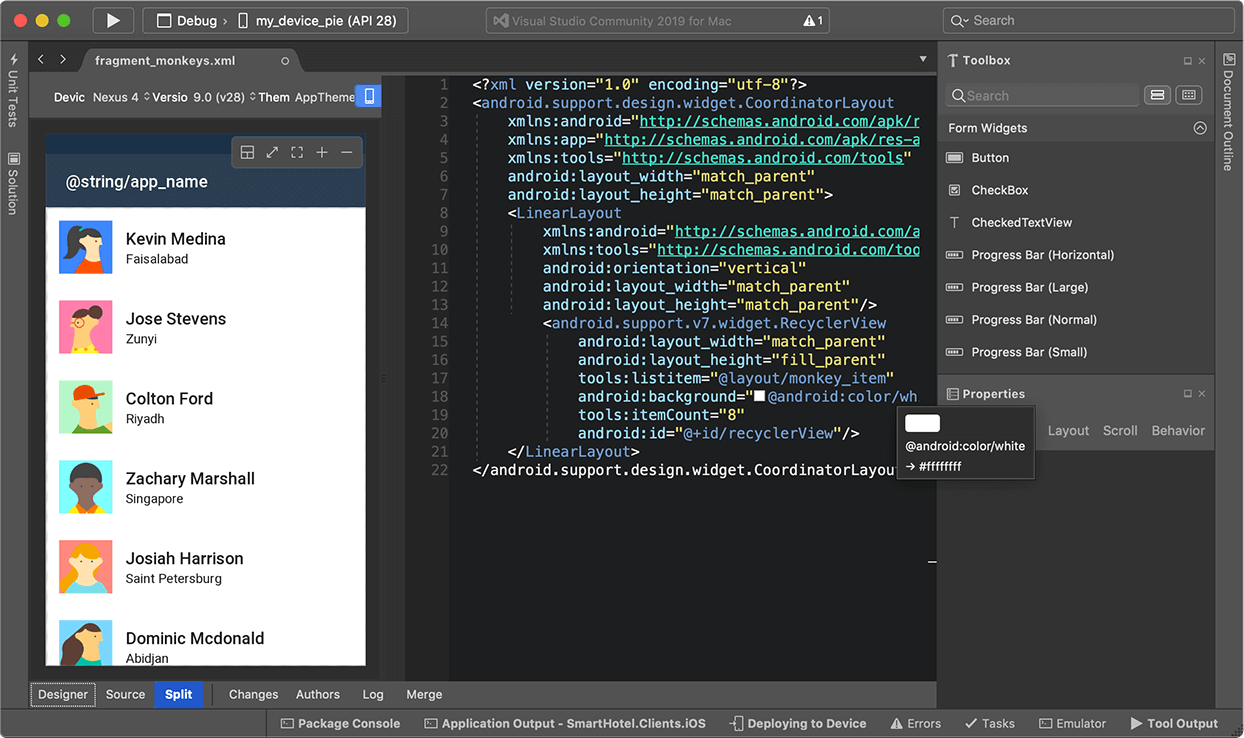

- #Xamarin visual studio enterprise how to
- #Xamarin visual studio enterprise install
- #Xamarin visual studio enterprise software
- #Xamarin visual studio enterprise code
- #Xamarin visual studio enterprise plus
In Visual Studio for Mac, do the following:ĭouble-click the project name in the Solution Explorer to open it for edit. Return to the Apple Provisioning Portal and select Provisioning > Distribution:Ĭlick the + button and select the type of Distribution Profile that you want to create as Ad-Hoc:Ĭlick the Continue button and select App ID from the dropdown list that you want to create a Distribution Profile for:Ĭlick the Continue button and select distribution certificate required to sign the application:Ĭlick the Continue button and enter a Name for the new Distribution Profile:Ĭlick the Generate button to create the new profile and finalize the process. Once you have the required components needed for creating a Distribution Profile, follow the steps below to create it:

#Xamarin visual studio enterprise plus
Next, click the plus (+) button and select iOS App Store:Ĭreate a Distribution Provisioning ProfileĪs with any other Provisioning Profile you create, an App ID will be required to identify the App that will be distributed to the user's device. Select your team, and click Manage Certificates…:
#Xamarin visual studio enterprise install
Once you have created the CSR as instructed, click Continue, and upload the CSR to the Member Center:įinally, Download the completed certificate and double-click on the file to install it.Īt this point, the certificate should be installed on the machine, but you may need to Refresh your profiles to ensure that they are visible in Xcode.Īlternatively, it is possible to request a Certificate via the Preferences dialog in Xcode. Under the Production heading, select In-House and Ad Hoc, or App Store and Ad Hoc, depending on your program membership:Ĭlick Continue, and follow the instructions to create a Certificate Signing Request via Keychain Access: Only Team Agents and Admins can create Distribution Certificates and Provisioning Profiles.īrowse to the Certificates, Identifiers & Profiles section of the Apple Developer Member Center.Ĭlick the + button to create a new Certificate.
#Xamarin visual studio enterprise how to
The next section will describe how to get set up with a Distribution Certificate and a Distribution Provisioning Profile.

This profile allows an application to be digitally signed for release so that it can be installed on an iOS device. This guide will provide information on Provisioning for Ad Hoc distribution, and information on how to distribute a Xamarin.iOS app.Įven if you plan to release a Xamarin.iOS application for In-House Deployment, for testing purposes, you'll need to build an Ad Hoc Distribution Provisioning Profile specific to it.
#Xamarin visual studio enterprise code
For more information on adding devices, visit the Device Provisioning guide.Īd hoc distribution requires that applications be provisioned using an Ad Hoc provisioning profile containing code signing information, as well as the identity of the application and the devices that can install the application. It is, however, limited to 100 devices per membership year, for both development and distribution, and these must be manually added in the Member Center by their UDID. Xamarin.iOS applications can be user-tested via ad hoc distribution, which is available on both the Apple Developer Program and the Apple Developer Enterprise Program, and allows up to 100 iOS devices to be tested.Īd hoc distribution has the advantage of not requiring App Store approval, and it can be installed over-the-air from a web server, or via iTunes. However, members of the Apple Developer Enterprise Program do not have access to iTunes connect, so Ad Hoc distribution is the best method of testing these apps. ITunes Connect is one option for managing app testing and is described more in the TestFlight guide.
#Xamarin visual studio enterprise software
Once an Xamarin.iOS app has been developed, the next step in the software development lifecycle is to distribute the app to users for testing.

This document gives an overview of the Ad Hoc distribution techniques that are primarily used for testing an Xamarin.iOS applications with a wide group of people.


 0 kommentar(er)
0 kommentar(er)
